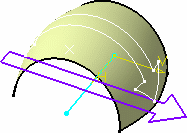Click Develop
 in the Developed Shapes toolbar.
in the Developed Shapes toolbar.
The Develop Definition dialog box appears as well as the Tools Palette.
For further information about the Tools Palette, refer to Infrastructure User's Guide
: Selecting Using Selection Traps.
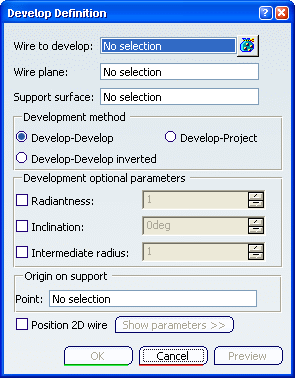
In the Wire to develop box, select the wire(s) to be developed.
When there are several wires to develop, the bag icon becomes
available. You can click it to access the Elements to develop dialog
box and remove or replace the selected wires.
- By default, the plane containing this wire is automatically
computed. If a wire to develop is replaced
using the Replace button, the new wire must lie on the
same plane as the wire to be replaced. If it lies on another plane,
use the Remove button or clear the selection and select
a new wire.
- However, when the wire is a line, you need to specify a
Wire plane.
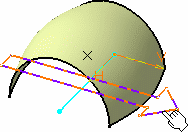
In the Support surface box, select the surface onto which the wire is to
be developed.
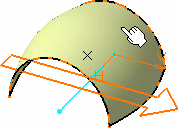
Click Preview.
The axis-systems are displayed both on the wire's
virtual plane and the surface. These are the default axis-systems. By
default, the origin of the support's axis-system is located at a
point on the surface where the plane is parallel to the wire's plane.
However, it is usually more pertinent to specify
exactly the axis-systems origin.
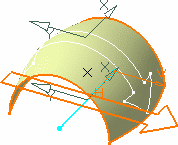
Click the Point box and select a point, on
the surface, defining the support axis-system's origin.
The axis-systems are modified, the support's
axis-system to coincide with the selected point, and the wire's
axis-system to retain the shortest distance between the two
axis-systems' origins.
Consequently, the resulting wire is also modified.
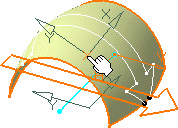
If you select the Position 2D wire check box
then click Show Parameters to expand the dialog box and modify the wire
axis-system's positioning.
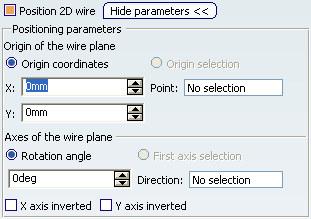
- Specify the wire axis-system's origin by either entering
coordinates, or selecting a point.
- Specify the x-axis of the axis-system by either selecting a
line or specifying a rotation angle in relation to the initial
lowlight position.
- Select the X-axis inverted check box to invert the
x-axis orientation (while keeping the y-axis unchanged).
- Select the Y-axis inverted check box to invert the
x-axis orientation (while keeping the y-axis unchanged).
You could get something like this:
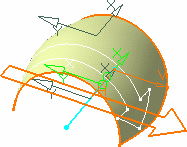
Click OK to create the developed wire.
The element (identified as Develop.xxx) is added to
the specification tree.
